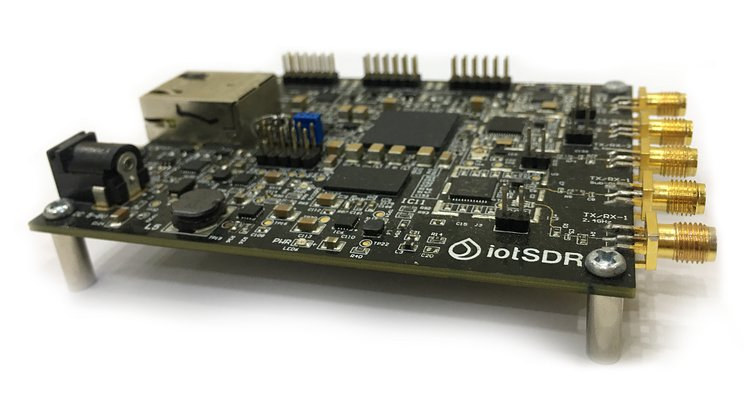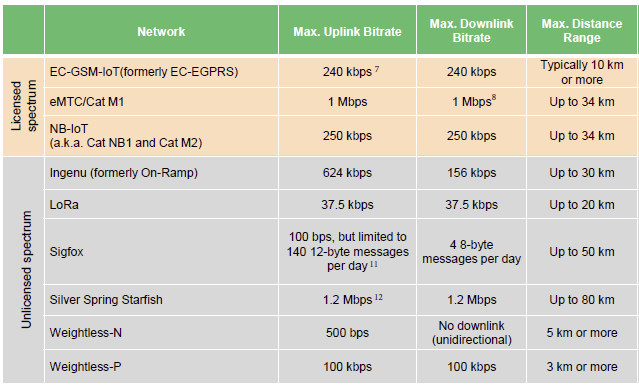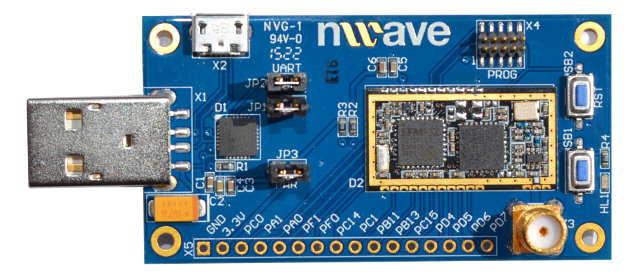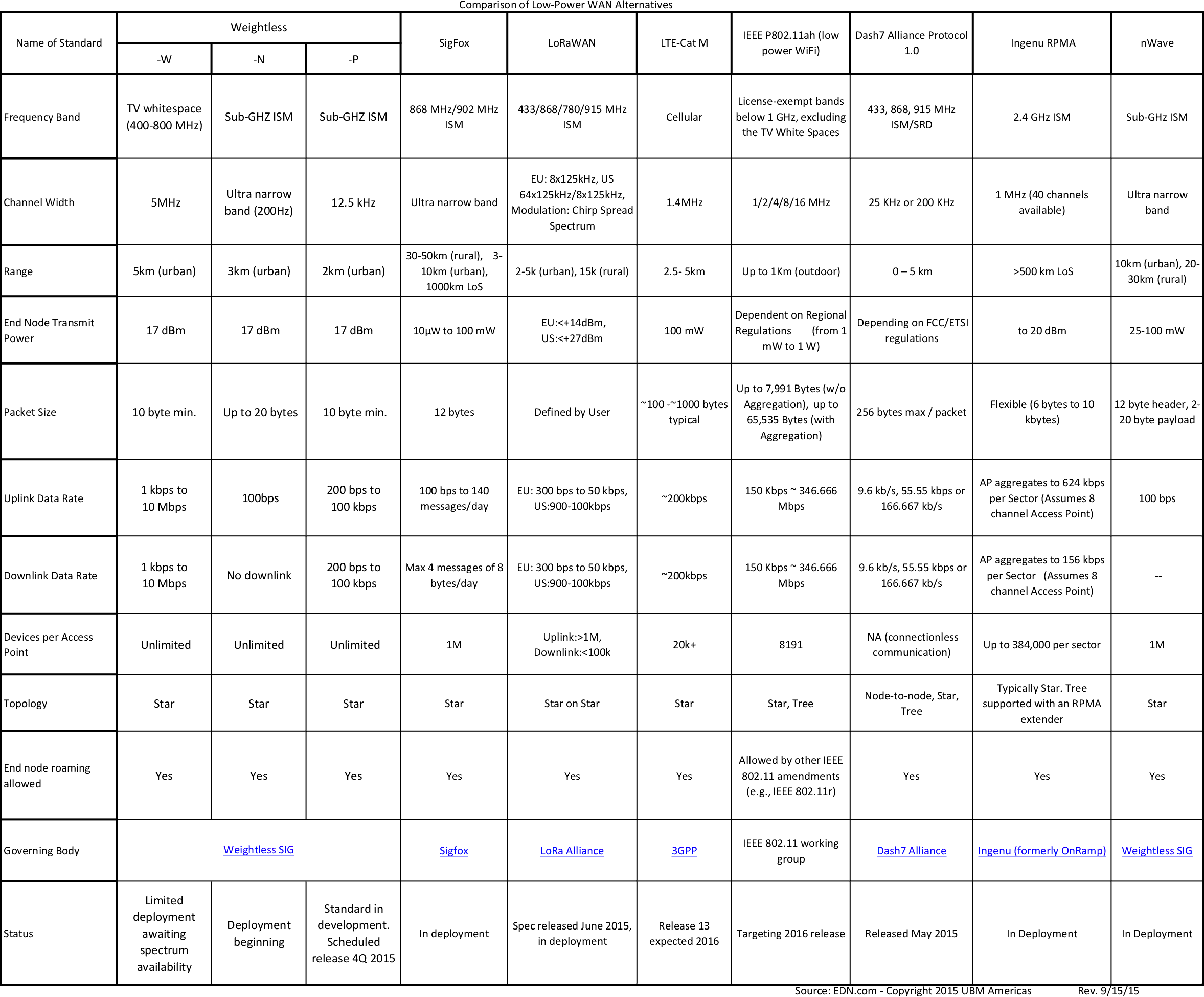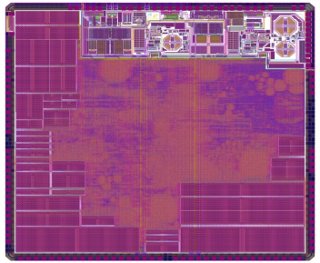Xilinx Zynq-7010/-7020 powered iotSDR board by EmbedINN enables the development of IoT gateways with support for LoRa, SigFox, WeightLess, Bluetooth, BLE, 802.15.4, ZigBee, as well as custom IoT protocols. The board also supports GPS, Galileo, Beidou, and GLONASS navigation systems thanks to a Maxim Integrated MAX2769 GNSS chip. iotSDR key hardware features and specifications: SoC (one or the other) Xilinx Zynq-Z7010 (XC7Z010-1CLG400C) dual-core Arm Cortex-A9 processor with 256 kb on-chip memory, FPGA fabric with 28,000 logic cells, 17,600 LUTs, 2.1 Mb block RAM, 80 DSP slices Xilinx Zynq-Z7020 (XC7Z020-1CLG400C) dual-core ARM Cortex-A9 processor with 256 kb on-chip memory, FPGA fabric with 85,000 logic cells, 53,200 LUTs, 4.9 Mb block RAM, 220 DSP slices System Memory – 512 MB DDR3 Storage 128 Mbit QSPI flash memory for firmware Microchip AT24MAC602 SPI EEPROM for RF transceiver MCU firmware and data Radios “IoT” Radios RF Transceivers – 2x Microchip/Atmel AT86RF215 European band – […]
LoRaWAN Currently Leads LPWAN IoT Gateway Deployments Says VDC Research
LoRaWAN, Sigfox, Weightless, RPMA, NB-IoT, etc… There are many LPWAN (Low Power Wide Area Networks) solutions, but it’s unclear whether most/all will survive and coexist, or there will eventually be a couple of winners used by everyone. VDC Research is claiming that so far, LoRaWan assumes LPWAN leadership for IoT gateways, explaining that “LoRaWAN (LoRa) has generated considerable traction with new product launches from a number of gateway suppliers through the past 18 months”, but points to mounting competition from 3GPP standards such as NB-IoT and LTE Cat M1. Sadly, the company did not provides number in their public announcement, and those are only available in the paid report. VDC Research still released a public executive brief (free registration required), with some of the highlights including: The global market for IoT gateway hardware is forecasted to grow to more than $2.5B in 2021. While intelligent gateways generated more market revenue […]
Weightless Development Kits are Finally Available (Sort of)
The first version of the Weightless standard aiming at lowering cost of IoT communications was published in 2013, but so far development kits were nowhere to be found. Nwave has now launched a Weightless-N SDK using sub-GHz spectrum, but not the white space spectrum used by Weightless-W, probably due to regulatory hurdles. Specifications and features of Nwave development board: MCU – Silicon Labs EFM32G210F128 ARM Cortex M3 MCU @ 32 MHz with 128KB flash, 16KB SRAM Connectivity – RM3 radio module (868MHz) and antenna connector (X3) USB – X1 USB port for connection to PC or UART interface, X2 micro USB port Debugging – UART, and 10-pin JTAG connector (X4) Expansion header – 16 through holes for GND, 3.3V, GPIOs, ADC, Timers output, I2C, etc… (X5) Misc – Three Jumpers for UART and other selections (TBD), reset buttons for USB ports? Power – 5V via USB ? Dimensions – N/A […]
Comparison Table of Low Power WAN Standards for Industrial Applications
WiFi, Bluetooth and Zigbee are commonly found in consumer devices part of the “IoT ecosystem”, but the range, cost, power consumption, and/or scalability of these wireless standards are not suitable. For example, agricultural and forestry applications normally require long distance, and smart parking or city lighting may requires scalability to a great number of nodes, so alternatives are needed. EDN wrote a thorough article comparing 10 alternative wireless standards: Weightless-W, Weightless-N, Weightless-P, SigFox, LoRaWAN, LTE-Cat M, IEEE P802.11ah, Dash7, Ingenu RPMA, and nWave. The table includes the frequency band, channel width, range, transmit power, packet size (minimal or maximal), downlink and uplink data rates, maximum number of connected devices, topology, roaming capability, and status. If you had to implement something today, four to five solutions are “in deployment”: SigFox, Ingenu RPMA, nWave, LoRa, and possibly Dash7, while the other are only starting to get deployed, or will be finalized in […]
Weightless-P Standard is Designed for High Performance, Low Power, 2-Way Communication for IoT
Weightless was unveiled over two years ago, as a new standards for IoT leveraging “white space” spectrum, previously used by analog TV broadcasts, for free M2M / IoT communication using low power (10 years battery life) and cost-efficient hardware ($2 hardware) offering a range of 5 to 10 km. Development kits and base stations were scheduled for Q2 2014, but there’s either been some delays or they are only available to Weightless members, as you need to register to get notified once hardware becomes available. The Weightless SIG (Special Interest Group) has not stopped working on the standard as there are now three Weightless standards: Weightless-W (using White band spectrum), Weightless-N (sub-GHz spectrum), and and newly announced Weightless-P offering similar features as 3GPP carrier grade solutions, but at lower costs and lower power consumption. The key features of Weightless-P are shown below: Excellent capacity and scalability for IoT deployment FDMA+TDMA […]
Weightless Roadmap – Silicon, Modules, SDKs, Base Stations and Networks
The Weightless Standard aims at using the “white space” spectrum, previously used by analog TV broadcasts, for free M2M / IoT communication coupled with low power and cost-efficient hardware offering a range of over 10 km. Longer term the target is to reach $2 hardware cost, and $2 yearly servicing costs. Companies involved with Weightless include Neul, ARM, CSR and Freescale among others. You can read my previous post about Weightless for a longer overview. The Weightless Special Interest Group (SIG) has recently revealed the hardware roadmap for the new standard, which I’ll summarize below. Weightless Chip Neul Iceni, the first weightless silicon, was officially announced in February 2013. The latest version of the chip taped in May 2013 integrates UHF radio operating between 410 and 790 MHz supporting both TV white space and narrowband operation. It is suitable for low volume production applications. A third generation will be taped […]


